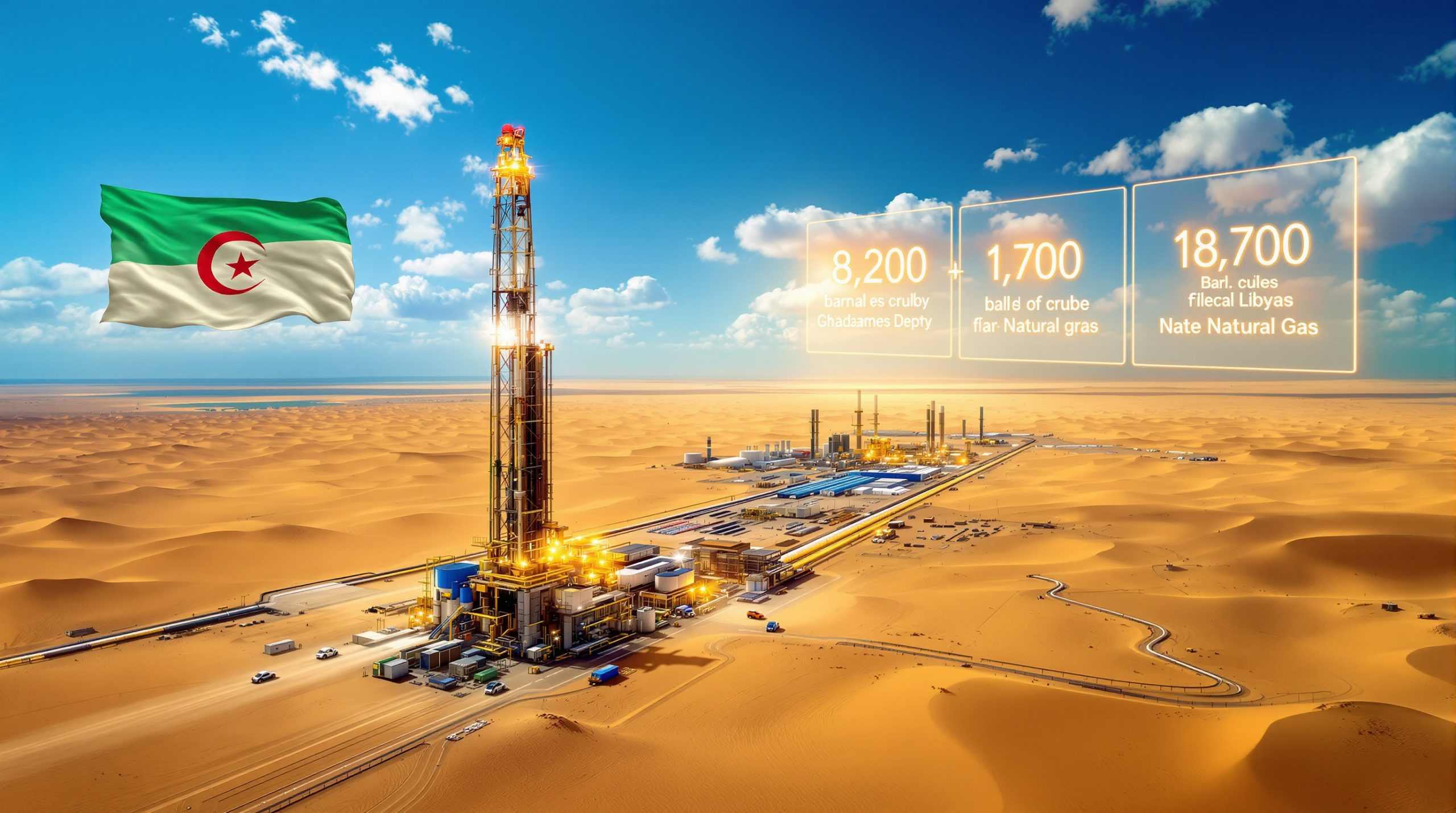What Are the Latest Oil Price Trends in 2025?
Oil prices have made a significant comeback, rebounding above the $60 mark as geopolitical tensions and positive trade developments create market optimism. WTI crude reached $59.15 while Brent crude climbed to $62.12, both showing gains exceeding 1% in early May 2025 trading sessions.
The market's upward momentum comes after several months of volatility, with traders responding positively to diplomatic breakthroughs in international trade relations. However, these gains remain tempered by strategic production increases from major oil-producing nations.
According to market analysts, current price levels represent a delicate balance between improving demand outlooks and expanding supply capabilities. The Energy Information Administration (EIA) recently reported a 2.5 million barrel drop in U.S. crude stockpiles, further supporting the oil price rally despite OPEC+ output expansion.
How Are Global Trade Developments Affecting Oil Markets?
US-UK Trade Agreement Boosts Market Confidence
The announcement of the first post-tariff trade deal between the United States and the United Kingdom has injected positive sentiment into oil markets. President Trump announced the agreement on his Truth Social platform, describing it as "comprehensive" and emphasizing its importance as "the first of many" planned trade negotiations with global partners.
"This landmark deal with the UK establishes a template for future partnerships and demonstrates our commitment to fair trade that benefits American workers," President Trump stated in his announcement.
This development has reassured investors who had been concerned about potential economic slowdowns from widespread tariff implementation. Markets responded with immediate gains, as traders factored in stronger economic activity and corresponding energy demand.
US-China Trade Talks Signal Potential Détente
Another significant factor supporting oil price increases is the scheduled US‑China trade talks between the United States and China. Treasury Secretary Scott Bessent and Trade Representative Jamieson Greer are set to meet with Chinese Vice-Premier He Lifeng in Geneva, marking the first attempt to ease tensions between the world's two largest economies since recent tariff threats.
These preliminary discussions could potentially prevent further escalation of trade conflicts that would otherwise dampen global trade impact and oil demand. Economists at the International Monetary Fund have previously estimated that every 10% increase in tariffs between major economies could reduce global GDP by approximately 0.5%, with corresponding negative effects on energy consumption.
Market analysts have described these talks as potentially able to "make or break" short-term price trajectories, with US tariff policies on Chinese goods (up to 25%) risking a reduction in Asia's crude demand by as much as 500,000 barrels per day if fully reinstated.
What Is OPEC+ Doing to Influence Oil Markets?
OPEC+ Production Increase Plans
Despite positive market sentiment from trade developments, OPEC+ continues to implement its strategy of increasing production beyond previously announced levels. The organization's phased production increase includes approximately 400,000 barrels per day in monthly increments, representing a significant shift in approach.
This expanded output plan creates a ceiling for potential price gains. Market analysts note that while demand indicators remain positive, the additional supply from OPEC+ members will likely prevent dramatic price increases in the near term.
Compliance with these new production quotas has decreased from the 110% compliance rates seen in 2024 to approximately 95% in early 2025, as member countries seek to capitalize on stabilizing prices.
Saudi Arabia's Price Strategy
In an interesting market development, Saudi Arabia has raised its official selling prices (OSPs) for Asian customers by $0.80 per barrel in May 2025, despite OPEC+ boosting supply. OSPs are premiums or discounts at which Saudi Arabia sells its crude relative to regional benchmarks.
This strategic pricing move suggests confidence in sustained demand from Asian markets, particularly as China shows signs of economic engagement through renewed trade discussions with the United States. It also indicates Saudi Arabia's determination to maintain market share in its most critical export region while supporting overall price levels.
How Are Investment Banks Responding to Market Changes?
Revised Price Forecasts
Several major financial institutions have adjusted their oil price projections in response to recent market developments:
| Investment Bank | Previous Forecast (Brent) | New Forecast (Brent) | Change |
|---|---|---|---|
| Morgan Stanley | ~$70 | $62.50 | -$7.50 (-12%) |
| Goldman Sachs | ~$75 | Reduced (Specific figure not provided) | Significant reduction |
| Standard Chartered | Higher range | Projecting lower prices before slow recovery | Downward revision |
These downward revisions reflect concerns about increased OPEC+ production and potential economic headwinds, despite the positive signals from trade negotiations. Goldman Sachs analysts notably commented that "trade détente may delay rebalancing until 2026," suggesting a longer timeline for market equilibrium than previously expected.
Investment banks typically employ Value-at-Risk (VAR) models that incorporate OPEC+ output projections, geopolitical risk assessments, and global GDP forecasts when determining their price outlooks. The recent shift toward bearish forecasts reflects a consensus view that supply growth will outpace demand in the near term.
What Regional Developments Are Impacting Oil Markets?
Nigeria's Production Targets
Nigeria has announced plans to increase its oil production to 1.8 million barrels per day by Q3 2025, joining other OPEC+ members in expanding output. This development adds to the supply-side pressure that could limit price gains in the coming months.
The Nigerian National Petroleum Corporation (NNPC) has emphasized that this production target aligns with the country's OPEC+ quota allocations while supporting economic recovery efforts. ExxonMobil's recently announced $1.5 billion investment in Nigerian deepwater oilfields further reinforces the country's commitment to expanding capacity.
India's Strategic Oil Imports
India has significantly increased its U.S. oil imports by 18% month-over-month in April 2025 amid ongoing tariff discussions, demonstrating the complex interplay between trade policy and energy markets. This strategic shift is supported by India's ambitious refinery capacity expansion plans, which are expected to add 1.2 million barrels per day of processing capability by 2026.
As one of the world's largest oil importers, India's purchasing decisions have substantial implications for global demand patterns. The country's gradual shift away from Middle Eastern supplies mirrors similar moves by European nations following sanctions on Russian oil in 2024.
European Energy Security Concerns
The European Union continues to face challenges in diversifying away from Russian gas supplies, with legal experts noting limited options for completely cutting off Russian energy imports. Despite significant efforts to reduce dependence, Russian gas still accounts for approximately 15% of EU imports.
"Cutting Russian gas entirely is legally fraught and practically challenging given infrastructure constraints," noted EU legal experts in a recent assessment of the bloc's energy options. These ongoing energy security concerns influence market sentiment beyond immediate price considerations and highlight the continued importance of traditional supply chains despite the accelerating energy transition.
What's Happening in North American Oil Production?
US Production Peak Projections
A major shale producer has indicated that U.S. oil production may be approaching its peak, contradicting earlier projections of continued growth. This assessment suggests potential supply constraints from North American producers that could partially offset the increased OPEC+ output.
Industry analysts point to several factors contributing to this plateau, including:
- Declining well productivity in mature basins
- Investor pressure for capital discipline rather than expansion
- Rising production costs due to inflation and supply chain constraints
- Increasingly challenging drilling locations as prime acreage is depleted
Standard Chartered's energy research team has cited this anticipated U.S. shale peak as a factor in their longer-term price outlook, suggesting that any production declines would eventually provide support for prices.
Canadian Energy Politics
Alberta's energy sector faces uncertainty amid discussions about potential separation from Canada, highlighting the political dimensions of North American energy production. With approximately 3 million barrels per day of export capacity at stake, any significant changes to Alberta's governance could have profound implications for Canadian oil exports and North American energy integration.
The province's vast oil sands resources represent one of the world's largest proven reserves, making the political situation a critical factor for long-term supply forecasts. Recent Alaska drilling update developments also show how policy shifts can impact regional production patterns. While actual separation remains a low-probability scenario, the ongoing tensions create regulatory uncertainty that affects investment decisions.
How Are Corporate Developments Shaping the Energy Landscape?
Merger and Acquisition Speculation
Reports indicate Shell may be evaluating a potential bid for BP, which would represent one of the largest energy sector mergers in history if pursued. Such consolidation could significantly reshape the competitive landscape among major oil producers.
Industry analysts suggest that consolidation efforts reflect:
- Strategic positioning for the energy transition
- Opportunities to eliminate redundant costs
- Enhanced capabilities to manage volatility
- Improved bargaining power with host governments
While no formal offer has been announced, the mere possibility has sparked significant discussion about the future structure of the global oil industry and potential regulatory responses.
Production and Exploration Investments
ExxonMobil has announced plans to invest $1.5 billion in deepwater oilfields in Nigeria, demonstrating continued commitment to traditional oil development despite market volatility. This investment aligns with Nigeria's production targets and highlights the ongoing importance of conventional assets even as companies diversify their portfolios.
Similarly, Energy Transfer is progressing toward a final investment decision on its Lake Charles LNG project by the end of 2025, indicating ongoing investment in natural gas infrastructure. These capital commitments suggest that major energy companies continue to see value in fossil fuel assets despite the accelerating energy transition and uncertain price environment.
What's the Outlook for Oil Prices in 2025?
Short-Term Price Drivers
The immediate outlook for oil prices will likely be determined by:
- The progress and outcomes of U.S. trade negotiations with multiple partners
- The implementation schedule for OPEC+ production increases
- Demand indicators from major economies, particularly China's Strategic Petroleum Reserve replenishment activities (estimated at 50 million barrels in 2025)
- Supply disruptions from geopolitical events
Traders are particularly focused on China's economic indicators, as the country's demand growth remains a critical factor in global market balances. Recent reports of SPR replenishment activities suggest continued strategic petroleum purchases that could support prices despite macroeconomic challenges.
Medium-Term Market Balance
Market analysts suggest that while current price levels around $60 per barrel represent a significant decline from previous highs, the market is finding a new equilibrium that balances:
- Increased OPEC+ production through their phased 400,000 bpd monthly increments
- Potentially peaking U.S. output as mature basins reach production plateaus
- Recovering global demand as trade tensions ease and economic activity normalizes
- Strategic adjustments by major producers, including Saudi Arabia's price differentials
"The oil market is entering a new phase of strategic balance where OPEC+ capacity increases offset potential declines in non-OPEC production, creating a more stable—if lower—price environment," notes a leading energy economist.
Brazil's pre-salt basin growth represents another important non-OPEC supply factor, with production increases expected to add significant volumes to global markets over the coming years. These new sources further complicate OPEC+'s market management efforts.
FAQ: Oil Price Trends and Market Dynamics
Why are oil prices rising despite OPEC+ increasing production?
Oil prices are rising primarily due to positive developments in global trade negotiations, particularly between the U.S. and UK, as well as scheduled talks between the U.S. and China. These diplomatic advances have reduced fears of economic slowdowns that would otherwise diminish oil demand. Additionally, market participants appear to have already priced in the OPEC+ production increases announced earlier.
Recent inventory draws, such as the EIA's reported 2.5 million barrel reduction in U.S. crude stockpiles, also provide fundamental support for prices despite expanding supply. This suggests that current demand remains robust enough to absorb additional barrels coming to market.
How do U.S. tariff policies affect global oil markets?
Tariff policies impact oil markets through several mechanisms:
- They can slow economic growth in affected countries, reducing energy demand
- They may disrupt established trade flows, changing regional price differentials
- They can alter currency values, affecting the purchasing power of oil-importing nations
- They may prompt strategic shifts in energy sourcing, as seen with India's increased U.S. oil imports
Economists estimate that full implementation of proposed tariffs between the U.S. and China could reduce global oil demand by as much as 500,000 barrels per day, primarily through slower economic growth and manufacturing activity.
What factors could push oil prices higher in the coming months?
Several factors could drive prices higher:
- Successful resolution of U.S.-China trade tensions
- Supply disruptions in major producing regions
- Stronger-than-expected demand growth as economic uncertainties fade
- OPEC+ reversing its production increase strategy
- Declining U.S. shale output if current price levels prove unsustainable for producers
Norway's new licensing round, which aims to boost output by 300,000 barrels per day, represents another potential supply factor, although these volumes would only reach markets after several years of development.
How are renewable energy developments affecting oil market dynamics?
The Rockefeller Foundation's initiative to close coal plants in emerging markets represents the ongoing energy transition that creates long-term pressure on fossil fuel demand. However, in the immediate term, traditional energy sources remain dominant in global supply chains.
Renewable impacts are felt more gradually through investment patterns rather than immediate price effects. The EU's challenges in reducing Russian gas reliance highlight the difficulties in rapidly transitioning energy systems, with renewable project delays (particularly in offshore wind) extending the timeline for fossil fuel dependence.
"The transition to renewables is inevitable, but the path remains non-linear. Oil markets are increasingly pricing in this transition, though immediate demand effects remain minimal compared to traditional economic factors," notes an energy transition specialist.
Further Exploration:
Readers interested in learning more about current oil market trends can also explore related educational content, such as Oilprice.com's regularly updated oil price charts and Reuters' energy market coverage for the latest developments in global oil markets.
Want to Spot the Next Major ASX Mineral Discovery?
Discover why significant mineral discoveries on the ASX can lead to substantial returns by exploring Discovery Alert's dedicated discoveries page, powered by their proprietary Discovery IQ model that transforms complex data into actionable investment opportunities. Begin your 30-day free trial today at https://discoveryalert.com.au/discoveries/ and position yourself ahead of the market.




